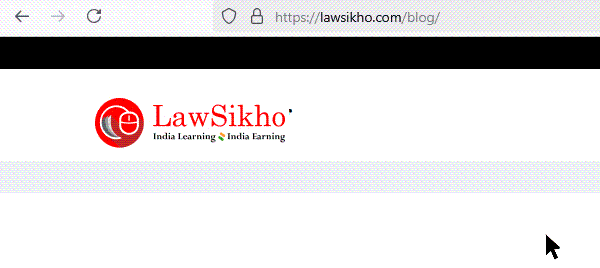Coca- cola recipe is considered as the most closely guarded and best-kept secret in the world,
The worldwide operating revenue of Coca-cola amounted to around US $33.01 billion in 2020. The success of this is credited to the much-hyped mystery recipe which is now kept in a purpose-built vault within the company’s headquarters in Atlanta.
The high security protection is to safeguard the recipe from being copied by any other manufacturer and losing the unique taste that the coca-cola boasts about.
But wouldn’t it be easier for Coca-cola to patent the recipe instead?
Well, the choice of IP protection always rests on profitability. If the patent protection makes people lose money, then companies would choose to avoid that.
Patenting the recipe would require the company to disclose the recipe fully, which they would have to do every 20 years.
The original recipe was written down in 1919 and the document containing the recipe sat locked in a bank in Atlanta which was later transferred to a multi-million vault. Coca-Cola also has been using the secret of the recipe in its marketing strategy and making billions in revenue annually only because the recipe is not disclosed.
Not just coca-cola, in 2008 KFC moved its unpatented ‘secret recipe’ to a new, secure location through armored cars.
Although patenting the recipe would have provided a different sort of protection, it becomes tricky when sensory attributes are involved. Components of a food product can be identified scientifically and imitated close enough to cause damage which these companies cannot afford.
But how far do our taste buds determine whether a recipe is worthy enough for a patent?
For chefs and companies who boast “We make the best!”, patenting a recipe can exclude others from making, using, or selling their delectable creation.
But hold on, to be patentable, an invention must be useful, novel and non-obvious.
That means a patentable invention can neither have existed before, nor be an obvious improvement or alteration of a previously known invention, which could be determined by someone with reasonable skill in the art encompassed by the invention.
Considering that people have been mixing together ingredients to produce different food products since the dawn of humanity-in fact, some of the earliest known examples of written language are food recipes. This is where patenting a recipe gets trickier.
These days, most “new” recipes are merely combinations of known ingredients in varying amounts, separate discoveries of preexisting recipes, or variations on known recipes. Even if a previous version of a recipe cannot be found, a “new” recipe could still be considered obvious.
A final food product typically is nothing more than the expected sum total of individual components.
This is when a good IP lawyer can play a crucial role. Careful drafting of the patent application and good technical explanation is extremely important at this stage.
One needs to measure the taste profile, teach how to achieve and test it. The profile can be defined with ingredients, or via techniques, things like low calories, shelf life, texture, appearance, etc.
More novel the idea is, the stronger the patent will be. The only drawback of full disclosure of the recipe is affordable than the loss incurred due to the competitor selling identical food items.
So what if your cousins decide to patent a great family recipe?
How can you as a lawyer help them to file the patent application?
Where will you start your patent search from?
Then there is a big task of making the patent draft which needs to be accompanied with the patent application.
If you know how to apply for a patent then you can also help clients from abroad to file their patents in your home country.
Many foreign companies envision bringing their pharmaceutical or fast moving consumer goods (FMCG) products to countries like India.
However hiring a foreing lawyer is difficult and expensive. If you as a lawyer can provide a high quality advice in your home country then you can become their preferred legal consultant for all the intellectual property (IP) issues.
But where do you start learning these skills?
How to get your first foreign client?
What other skills will you require to become an international IP lawyer?
We are bringing a 3-day boot camp on How to kickstart your international IP law career today from 14-16 May, 6-9pm IST.
During the boot camp, the CEO & the COO of LawSikho will teach you what kind of legal work and services can be easily performed for foreign clients by lawyers from their home country.
It can also be your gateway to make an international career in the IP law and can be a game changer when you apply for your LL.M. abroad.
[BOOTCAMP LINK]
If you have already registered for the boot camp then make sure that you update your calendar with the correct date and time. It is 14-16 May, 6-9pm IST.
If you live in a different country make sure to convert it to your local time.
We are receiving close to 1k registrations daily for this boot camp and if you want to make sure you make the most of this FREE boot camp then log in on time.
It is also virtual so you can attend it from anywhere in the world.
You may also refer this boot camp to a fellow IP law enthusiast by forwarding them this link: https://lawsikho.com/iplawbootcamp
WhatsApp Link: https://chat.whatsapp.com/KipwbKIfdosCoe6qOEqPac
Telegram Link: https://t.me/joinchat/RiTzRv17FjmqYcb3
We have started a YouTube channel on IP law which is updated daily, make sure you subscribe to it:
Students of Lawsikho courses regularly produce writing assignments and work on practical exercises as a part of their coursework and develop themselves in real-life practical skills.
LawSikho has created a telegram group for exchanging legal knowledge, referrals, and various opportunities. You can click on this link and join:
https://t.me/lawyerscommunity2
Follow us on Instagram and subscribe to our YouTube channel for more amazing legal content.






 Allow notifications
Allow notifications
